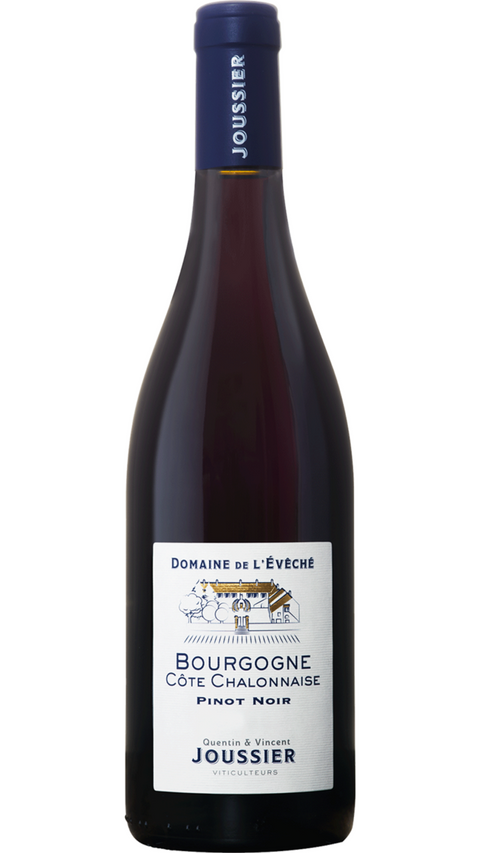
2019 Domaine de l'Évêché Côte Chalonnaise Bourgogne Rouge, Burgundy, France
This is a stellar Pinot Noir from the Côte Chalonnaise in southern Burgundy that is ruby in color and full of character and depth, with dark cherry, raspberry, and earth undertones. The palate has well integrated, silky tannins.
ABOUT THIS WINE
Harvest between August 30 and September 12, 2018. Manual and mechanical harvesting, sorting, destemming and vatting by gravity. Pre-fermentation cold maceration for 5 days then alcoholic fermentation with pumping over alternately with some punching down. Aging in stainless steel vats for 10 months then filtration and bottling in August 2019. The malolactic fermentation is carried out at 100%.
ABOUT THIS PRODUCER
Domaine de l’Eveche (translated as Domaine of the bishopric) covers 14 hectares (35 acres) and produces several appellations : Mercurey, Bourgogne Côtes Chalonnaise, Crémant de Bourgogne, Coteaux Bourguignon and Bourgogne Aligoté. The majority of the vines planted are Pinot Noir 80% and there is also Chardonnay (15%), Aligoté et gamay (5%). The Joussier family farm, produce and sale entirely their wine, they are self-sufficient. Half of their production is exported to 15 countries in 4 different continents.
The Joussier Family focus on growing fruits of the highest caliber that transcribe their dedication and care (manual labor) for both the vines and their terroirs.
They let the terroirs express their characteristics by vinifying each parcel separately.
The chai was renovated in 2018, with updated modernized thermos regulated stainless steel tank.
Wines that are meant to be aged in wood go through maturing French oak barrel made in Burgundy.
It is their pride to be self-sufficient from the farming to the bottling. They can perfectly control the quality of the product this way.
The domaine practices a sustainable agriculture. For several generations, the family has been plowing the soil to avoid weed-killers and other chemical agents. They maintain the vegetation, flora and fauna that surrounds the vines. The vines are surrounded by grass. After the pruning, the “sarments” (name of the cut twigs from the vines) are chipped to become natural organic nutriments. They renovate all the medieval stone wall, terraces, stone fountains and dredges the ditches to favor natural irrigation
Their approach benefit the environment while being global and self-sufficient.
